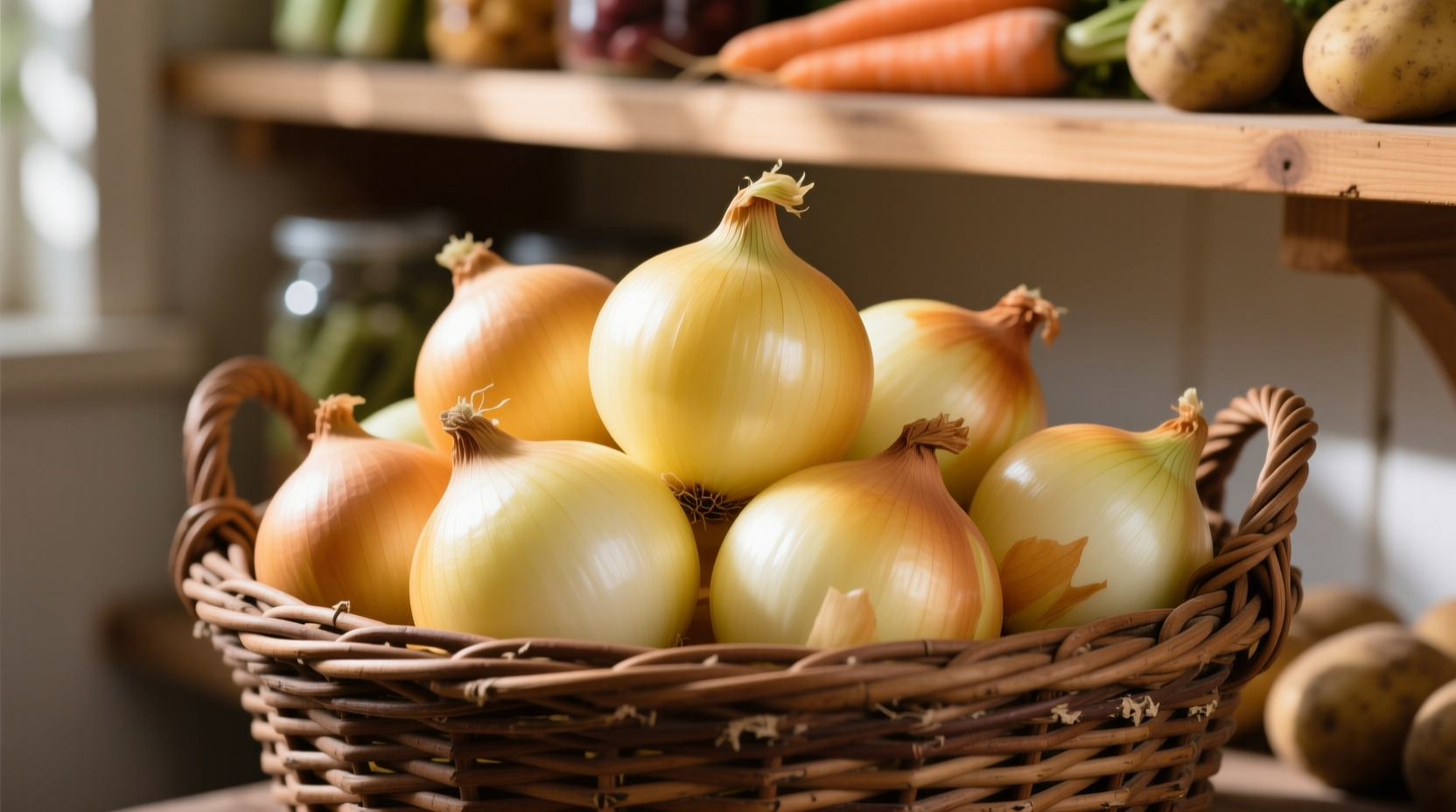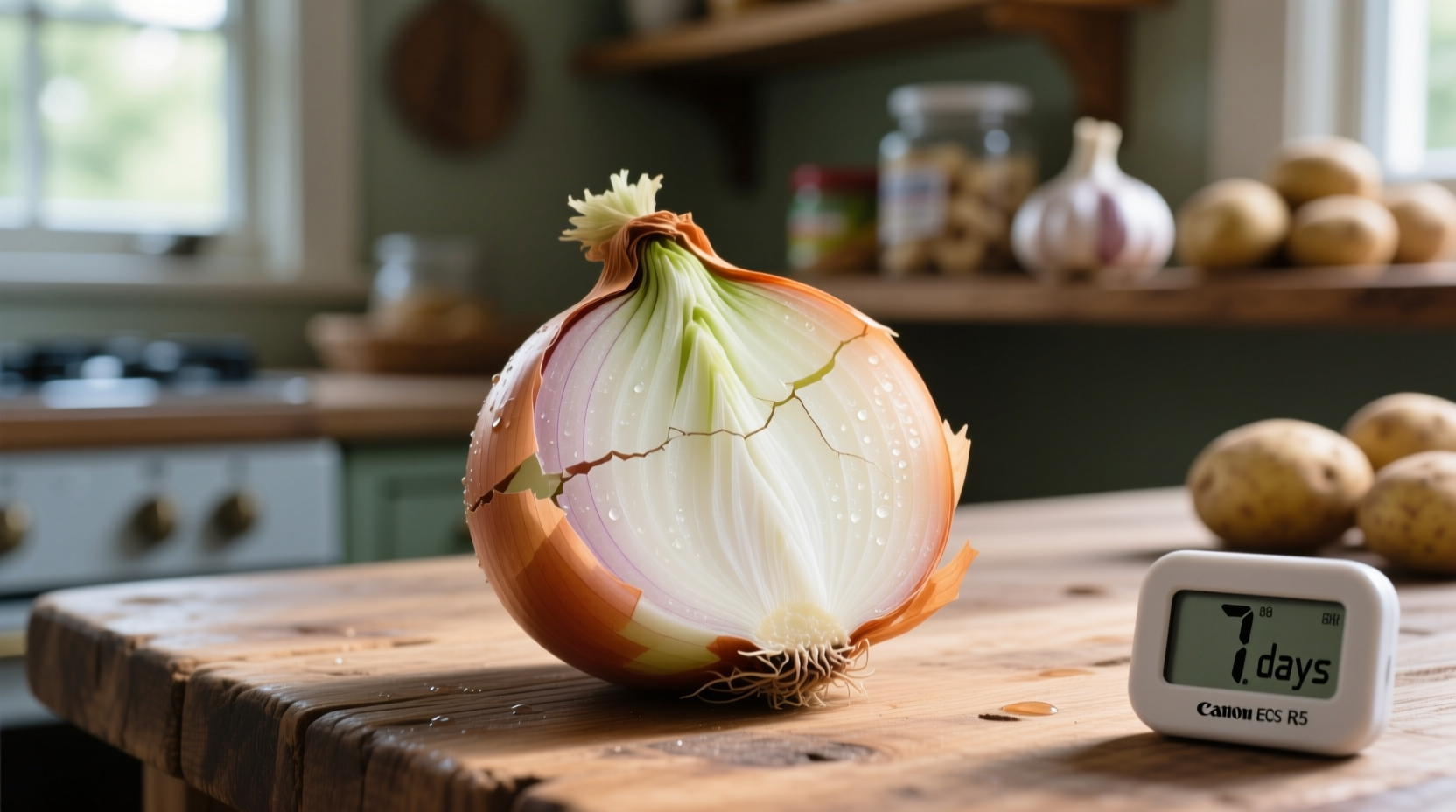Knowing exactly how long does an onion stay fresh can save you money and reduce food waste in your kitchen. Whether you're meal prepping for the week or stocking up on pantry staples, understanding proper onion storage is essential for maintaining flavor and preventing premature spoilage.
Why Proper Onion Storage Matters
Onions are one of the most versatile kitchen staples, but their shelf life varies dramatically based on storage conditions. Improper storage leads to sprouting, mold growth, or premature softening—wasting both money and ingredients. According to the USDA Food Safety and Inspection Service, improper food storage accounts for nearly 20% of household food waste.
Factors That Determine Onion Shelf Life
Several key factors influence how long onions stay fresh after cutting or while stored whole:
- Variety - Yellow onions last longest (2-3 months), while sweet varieties like Vidalia only last 1-2 months
- Storage environment - Temperature, humidity, and airflow dramatically impact longevity
- Condition at purchase - Firm, dry bulbs with intact skins last significantly longer
- Cutting status - Once cut, shelf life decreases substantially
Complete Onion Storage Guide by Method
Understanding how long do onions last in the fridge versus at room temperature helps you choose the best storage approach for your needs.
| Storage Method | Whole Onions | Cut Onions | Best For |
|---|---|---|---|
| Cool, dark pantry (55-60°F) | 2-3 months | N/A | Yellow, red, white onions |
| Refrigerator (32-40°F) | 1-2 months | 7-10 days | Sweet onions, cut onions |
| Freezer (0°F or below) | N/A | 6-8 months | Pre-cut onions for cooking |
| Countertop in plastic bag | 2-3 weeks | N/A | Avoid this method |
This comparison of onion shelf life in fridge vs pantry shows why proper storage matters. The data comes from the University of California Davis Postharvest Technology Center, which has conducted extensive research on vegetable storage conditions.
The Onion Spoilage Timeline: What Happens When
Understanding the progression of onion deterioration helps you catch problems early. This timeline shows what happens at each stage of spoilage:
- Weeks 1-4: Ideal storage conditions maintain firm texture and pungent aroma
- Weeks 5-8: Outer skins may become papery; slight softening may begin at root end
- Weeks 9-12: Sprouting may occur; texture becomes softer throughout
- After 12 weeks: Significant softening, mold growth, or unpleasant odor develops
This onion freshness timeline comes from research conducted by the USDA Agricultural Research Service on allium storage conditions.
Storage Conditions That Extend Onion Shelf Life
Not all storage environments work equally well for onions. These context boundaries determine success:
- Airflow is critical - Store in mesh bags, baskets, or paper bags with holes, never sealed containers
- Keep away from potatoes - Potatoes emit moisture and gases that accelerate onion spoilage
- Avoid humidity above 65% - High moisture causes mold and softening
- Don't wash before storage - Excess moisture promotes bacterial growth
These specific onion storage conditions that maximize freshness are verified by FoodSafety.gov's guidelines for vegetable storage.
How to Tell When Onions Have Gone Bad
Recognizing spoilage signs prevents foodborne illness. Discard onions showing any of these indicators:
- Mold growth - Any visible fuzzy spots (white, green, or black)
- Excessive softness - Areas that feel mushy when gently squeezed
- Unpleasant odor - Sour or ammonia-like smells indicate spoilage
- Sprouting - While sprouts themselves aren't harmful, they indicate aging and flavor loss
- Dark spots - Black or brown areas that penetrate beyond the outer skin
Pro Tips for Maximizing Onion Freshness
Professional chefs use these techniques to extend how long onions stay good in the fridge and pantry:
- Store cut onions in airtight containers with a paper towel to absorb excess moisture
- Place a piece of bread in your onion storage container—bread absorbs excess moisture
- For refrigerated cut onions, place them in water to maintain crispness for salads
- Freeze chopped onions on a baking sheet before transferring to freezer bags to prevent clumping
- Never store onions near apples or pears—they emit ethylene gas that speeds spoilage

Special Considerations for Different Onion Varieties
Not all onions have the same shelf life. Understanding how long do different types of onions last helps you prioritize usage:
- Yellow onions: Longest shelf life (2-3 months)—ideal for cooking and storage
- Red onions: Moderate shelf life (1-2 months)—best for salads and pickling
- White onions: Similar to yellow but slightly shorter shelf life (6-8 weeks)
- Sweet onions (Vidalia, Walla Walla): Shortest shelf life (1-2 months)—refrigerate after 3 weeks
- Green onions: Only last 3-5 days refrigerated—store roots in water for longer freshness
These onion variety shelf life differences are documented by the National Onion Association's storage guidelines.
Common Onion Storage Mistakes to Avoid
Based on consumer surveys from the Food Marketing Institute, these are the most frequent errors people make:
- Storing onions in plastic bags (traps moisture)
- Keeping onions near potatoes (accelerates spoilage)
- Refrigerating whole onions unnecessarily (causes texture changes)
- Washing onions before storage (introduces excess moisture)
- Storing cut onions without proper airtight containers
Avoiding these mistakes can extend your onions' freshness by several weeks, reducing food waste and saving money.











 浙公网安备
33010002000092号
浙公网安备
33010002000092号 浙B2-20120091-4
浙B2-20120091-4